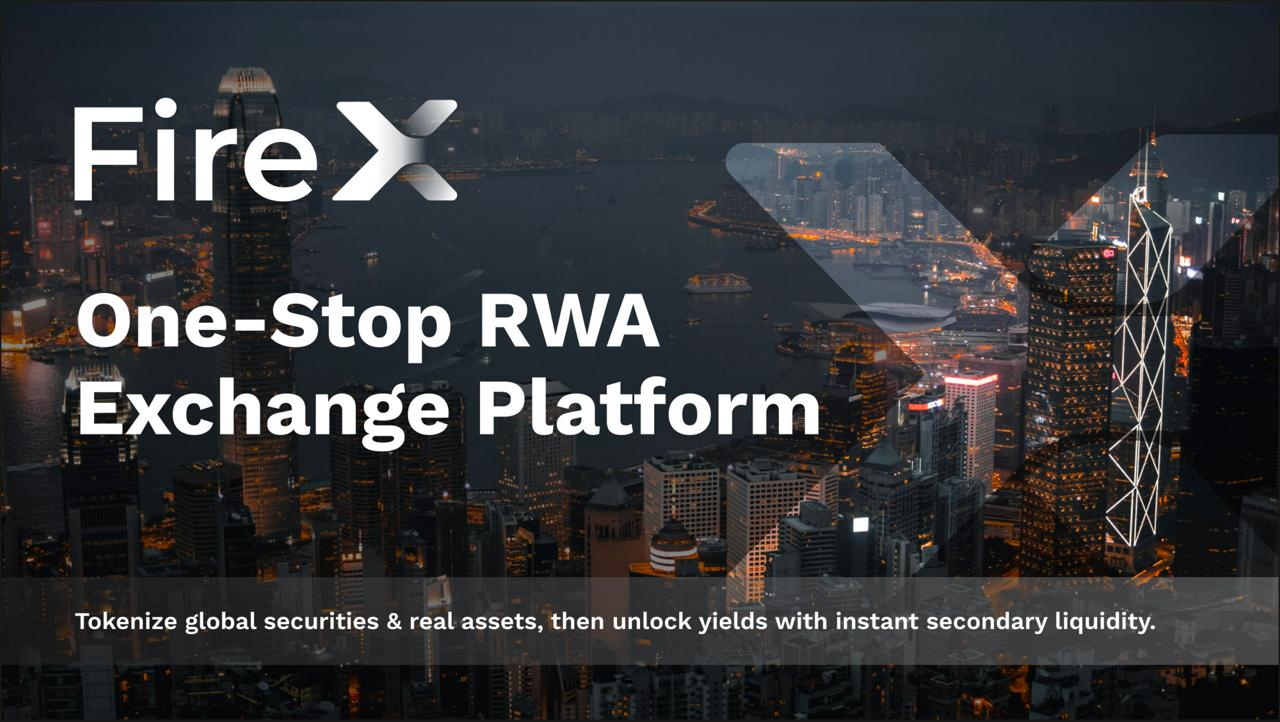 2025-10-10
2025-10-10

The financial world is standing at the edge of a quiet revolution.
Real World Assets (RWA) — the tokenization of tangible assets like bonds, real estate, and commodities — are rapidly transforming how value is created, verified, and exchanged.
For FireX, RWA is not just another DeFi narrative.
It’s a systemic redesign of how global finance works — one that replaces institutional trust with verifiable transparency, and static ledgers with dynamic, programmable markets.
For centuries, traditional finance has been built upon paper, intermediaries, and jurisdictional boundaries.
Each step — issuance, custody, settlement, auditing — relies on a chain of trust between entities, often siloed and opaque.
This structure creates several long-standing inefficiencies:
Multi-layer custodianship and reconciliation delays
Cross-border transaction friction and regulatory fragmentation
High operational costs and limited transparency
In essence, traditional finance is a trust pyramid — reliant on institutions, not code.
The result: vast pools of assets remain illiquid and inaccessible, trapped in closed systems that struggle to communicate with each other.
2. From Trust to Verification: The RWA Revolution
RWA marks a shift from “trusted intermediaries” to “verifiable systems.”
By encoding real-world assets into smart contracts, RWA networks allow financial transactions to operate under a new logic:
Proof of Authenticity – Each asset’s origin, ownership, and cash flow can be cryptographically verified on-chain.
Atomic Settlement – Transactions finalize instantly without third-party clearing.
Global Liquidity – Assets become discoverable and tradable across jurisdictions, 24/7.
What used to take days or weeks — transferring a bond, pledging collateral, or verifying title — can now occur in minutes.
Finance moves from being slow and paper-based to instant and composable.
3. FireX’s Vision: Building the Infrastructure for On-Chain Finance
At FireX, we view RWA as the foundation of a new financial internet — one that bridges traditional capital with decentralized infrastructure.
We’re focused on building three core pillars to make this transformation scalable and credible:
On-Chain Credit Layer
FireX is developing standardized credit models that map traditional risk metrics — credit ratings, default probabilities, and cash flow patterns — into verifiable on-chain data structures.
Compliance Bridge
FireX collaborates with licensed custodians and legal partners across jurisdictions, ensuring that every tokenized asset maintains legal enforceability both on paper and on-chain.
Open Liquidity Market
We’re creating decentralized secondary markets where tokenized assets can be traded, collateralized, or composited into new financial products — all within a unified liquidity layer.
Our mission is to merge the stability of traditional finance with the efficiency and openness of blockchain.
4. When TradFi Meets DeFi: Boundaries Begin to Fade
The future of finance isn’t a clash between TradFi and DeFi — it’s a fusion.
We’re already seeing early signals:
Institutional Adoption – Banks, funds, and asset managers are exploring blockchain-based debt, fund shares, and yield products.
Regulatory Innovation – Governments are piloting “on-chain compliance” and programmable auditing frameworks.
AI + DeFi Convergence – Machine learning models are beginning to power risk pricing, yield optimization, and real-time portfolio management for RWAs.
In this new landscape, traditional finance evolves from a closed ledger to an open protocol — one that speaks the language of code, transparency, and interoperability.
5. From Paper to Chain: A Civilizational Leap
Bringing real-world assets on-chain is more than a technological upgrade — it’s a civilizational leap.
It redefines how trust, value, and ownership are expressed in a digital economy.
At FireX, we’re not merely putting assets on blockchain; we’re rebuilding the foundation of global finance — one where capital moves freely, verifiably, and inclusively.
The goal is not to “put traditional finance on-chain.”
It’s to enable a world where assets are born natively digital, and markets operate as open networks rather than gated systems.